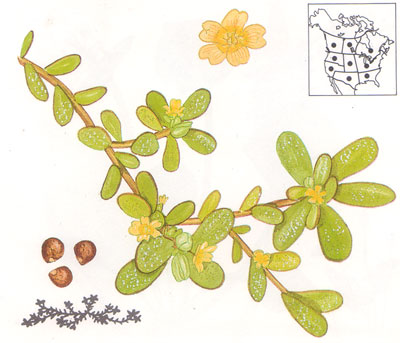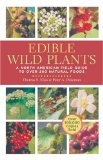More Urban & Rural Foraging; The Versatile Purslane
You probably won’t find the Purslane at your local grocery store, but given its wide distribution, you MIGHT find it growing in lots and parks near your grocer. In fact, it’s found in nearly every temperate climate zone in the world north of the Equator. In North America, if can be found as far south as Mexico right up to the Arctic Circle, though some contend the plant is an invasive species in the New World. Regardless of its origins, this “lowly weed” is a hardy and versatile, if somewhat under-appreciated, source of nutrition. And yet, most people couldn’t distinguish the plant from a line up of common plants in their region. If you can learn to identify the Purslane, you’ll be well ahead of your contemporaries and able to enjoy a free, tasty treat with little competition.
Identifying the Edible Purslane
 The Purslane forms mats of vegetation on the ground if not heavily grazed or competing with more aggressive plants. These plants have prostrate (parallel to the ground) succulent (rather than woody) branches. The leaves emerge from the same spot on either side of these branches. These leaves are shiny, fleshy and paddle shaped. The leaves at the very end of a branch are arranged in clusters called rosettes.
The Purslane forms mats of vegetation on the ground if not heavily grazed or competing with more aggressive plants. These plants have prostrate (parallel to the ground) succulent (rather than woody) branches. The leaves emerge from the same spot on either side of these branches. These leaves are shiny, fleshy and paddle shaped. The leaves at the very end of a branch are arranged in clusters called rosettes.
From each of the rosettes, a single yellow flower emerges. The yellow flowers have five regular parts and are up to 6 mm wide. The flowers appear depending upon rainfall and may occur year round. The flowers open singly at the center of the leaf cluster for only a few hours on sunny mornings.
When the plant fruits, it produces small, egg-shaped capsules. These capsules open when the seeds are ready for distribution (or gathering).
Gathering and Eating Purslane
Purslane is often found in waste places, fields and unused lots. It also finds its way into many gardens, where it is often dismissed as a weed. In the US and Canada it it not much used, but in Mexico it is enjoyed for its salty, slightly sour taste.
Leaves and branches are edible, but tender shoots gathered in the late Spring through early Autumn are best. In their simplest form, these need only be washed and used just like any other salad green. It can also be lightly cooked like spinach or kale as an excellent side dish. Added to soups and stews, it thickens the dish as well as adding flavor and nutritional value.
The larger and tougher older stems can be pickled much like cucumbers. The seeds can be gathered once the fruit pods start to open. These seeds should be thoroughly dried for consumption. Roasting improves the flavor of the seeds, but they can also be ground into flour. Indeed, in some cultures purslane “seed cakes” are a valuable food.
 |
Nutritional Information About Purslane
From Wikipedia: “Purslane contains more Omega-3 fatty acids (alpha-linolenic acid in particular) than any other leafy vegetable plant. Simopoulos states that Purslane has .01 mg/g of Eicosapentaenoic acid (EPA). This is an extraordinary amount of EPA for land based vegetable sources. EPA is an Omega-3 fatty acid normally found mostly in fish, some algae and flax seeds. It also contains vitamins (mainly vitamin A, vitamin C, and some vitamin B and carotenoids), as well as dietary minerals, such as magnesium, calcium, potassium and iron. Also present are two types of betalain alkaloid pigments, the reddish betacyanins (visible in the coloration of the stems) and the yellow betaxanthins (noticeable in the flowers and in the slight yellowish cast of the leaves). Both of these pigment types are potent antioxidants and have been found to have antimutagenic properties in laboratory studies. 100 grams of fresh purslane leaves (about 1 cup) contain 300 to 400 mg of alpha-linolenic acid. One cup of cooked leaves contains 90 mg of calcium, 561 mg of potassium, and more than 2,000 IUs of vitamin A.”
Additional Research:
 |
Leave a Reply